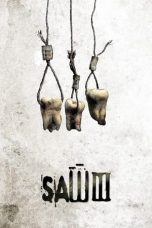- Source: Elu
Eḷa, also Elu, Hela or Helu Prakrit, was a Middle Indo-Aryan language or Prakrit of the 3rd century BCE, that was used in Sri Lanka. It was ancestral to the Sinhalese and Dhivehi languages.
R. C. Childers, in the Journal of the Royal Asiatic Society, states: [Elu] is the name by which is known an ancient form of the Sinhala language from which the modern vernacular of Ceylon is immediately received, and to which the latter bears is of the same relation that the English of today bears to Anglo-Saxon...The name Elu is no other than Sinhala much succeeded, standing for an older form, Hĕla or Hĕlu, which occurs in some ancient works, and this again for a still older, Sĕla, which brings us back to the Pali Sîhala.
The Pali scholar Thomas William Rhys Davids refers to Eḷu as "the Prakrit of Ceylon".
The Hela Havula are a modern Sri Lankan literary organization that advocate the use of Eḷu terms over Sanskritisms. Eḷu is often referred to by modern Sinhalese as amisra, Sanskrit and Sinhalese term for "unmixed".
A feature of Eḷu is its preference for short vowels, loss of aspiration and the reduction of compound consonants found frequently in other Prakrits such as Pali.
Eḷu in comparison with Pali and Sanskrit
Being a Prakrit, Eḷu is closely related to other Prakrits such as Pali. Indeed, a very large proportion of Eḷu word-stems are identical in form to Pali. The connections were sufficiently well known that technical terms from Pali and Sanskrit were easily converted into Eḷu by a set of conventional phonological transformations. Because of the prevalence of these transformations, it is not always possible to tell whether a given Eḷu word is a part of the old Prakrit lexicon, or a transformed borrowing from Sanskrit.
= Vowels and diphthongs
=Sanskrit ai and au always monophthongize to Eḷu e and o, respectively
Examples: maitrī → met, auṣadha → osada
Sanskrit avi becomes Eḷu e (i.e. avi → ai → e)
Example: sthavira → thera
= Sound changes
=Initial ca in Sanskrit and Pali becomes s or h
Examples: canda → sanda, handa
P if not omitted becomes v
Examples: rūpa → ruva, dīpa → diva
The Sanskrit sibilants ś, ṣ, and s merge as Eḷu s
Examples: śaraṇa → saraṇa, doṣa → dosa
The Sanskrit kti becomes ti or vi
Examples: bhakti → bätiya, shakti → saviya
= Compound consonants
=At the beginning of a word only a single consonant can remain
Examples: dharma → dahama
Examples: prāna → pana
In the middle of a word no group may exceed one consonant
Examples: artha → aruta
Examples: danta → data
Samples
= Tōṇigala Rock Inscription of Śrīmeghavarṇṇa(4th century A.D)
=Si! Puviya Mahasena-maharajaha puta Sarimekavaṇa-Aba-maha-rajaha cata legi-taka tiṇavanaka-vasahi.
[Lines 1–2] Hail! In the time of the third year after the raising of the umbrella by the great king Sirimekavaṇa Aba son of the great king Mahasena.
Nakarahi utarapasahi Kaḷahumanaka-niya-matanahi siya aviya⸗kiṇiyeni nikata Kaḍubalagamakehi vasanaka - Ameti-paheja-Sivaya-ha puta-Devayaha Yahisapavaya-nava-vaherakehi dina ariyavasa vaṭavi de hakaḍa dasa amaṇaka vi ica sa amaṇaka udi ica bayali dasa amaṇa ica.
[Lines 2–6] Two hakaḍas (cartloads) and ten amaṇas of paddy, six amaṇas of udi and ten amaṇas of beans were deposited [with the stipulation that the capital should] neither be spent nor decreased, by Devaya the son of Sivaya, a member of the Council of Ministers, residing at the village of Kaḍubala, with the assembly of the merchants’ guild at Kaḷahumana [situated] in the northern quarter of the city; and were granted for the purpose of conducting the holy vassa in the new monastery of Yahisapavaya.
Me de hakaḍa dasa a-maṇaka vi piṭadaḍa-hasahi veḍa akala-hasahi veḍha ma-de-hasahi veḍha pacavisiya amaṇaka vi ica me sa amaṇaka udihi veḍha eka amaṇa de pekaḍaka udi ica dasa amaṇaka bayalihi veḍha de a-maṇa de pekaḍaka bayali ica.
[Lines 6–10] Of the aforesaid two hakaḍas and ten amaṇas of paddy, the interest at the principal harvest (piṭadaḍa hasa), the interest at the secondary harvest and the interest at the intermediate harvest [amount to] twenty-five amaṇas of paddy. Of the aforesaid six amaṇas of udi, the interest is one amaṇas and two pekaḍas of udi. Of the aforesaid ten amaṇas of beans, the interest is two amaṇas and two pekaḍas of beans.
Me vataka-vaṇahi gahe kiṇiya ciṭa-vaya veḍha geṇa tiṇaḍa hakaṭa dana-vaṭa ica atarakajaka-vaṭa ica atarakaja-(pari)kara-yapeni ica di miya-vaṭa peṇi tila ica bunatela ica loṇa ica palaha-vaṭa ica veṭayala ica vahera . . ga sara pa . . pacanahi miliya padiya ica
[Lines 10–14] Of the above-mentioned deposit, the capital should be left unspent and from the interest received, the expenses for two and a half hakaḍas of boiled rice, atarakaja, dishes taken with atarakaja, curd, honey, sweets, sesame, butter (?), salt, green herbs, and turmeric should be given at the refectory of the monastery, . . .
Meva [taka] veḍhavataka geṇa vanaya va[na]ya atovasahi Nikamaniya-cada puṇamasa doḷasa-paka-divasa [a]riyavasa karana maha-bikusagah⸗aṭa niyata koṭu Yahisapava[ta-na]-va-vaherakahi dini.
[Lines 14–17] [The above] were granted to the new monastery at Yahisapavata so that the interest may be taken and appropriated for the use of the great community of monks who perform the holy vassa on the twelfth day of the bright half of the month of Nikamaniya in every succeeding rainy season.
Thonigala Rock Inscriptions, Anamaduwa under reign of Gamani Abhaya(1st century A.D)
List of Elu words with their Sanskrit and Pali equivalents
References
See also
Linguistic history of the Indian subcontinent
Kata Kunci Pencarian:
- Yesus dielu-elukan di Yerusalem
- Bahasa Elu
- Elu, Katikutana Selatan, Sumba Tengah
- Tari Baris
- Kleopatra
- Diponegoro
- Minggu Palma
- André Onana
- Daftar kata bahasa Indonesia yang selalu dalam bentuk terulang
- Daha Elu, Umbu Ratu Nggay Barat, Sumba Tengah
- Elu (disambiguation)
- Elu
- Elu (woreda)
- Elu Rottigalu
- Harju Elu
- Lääne Elu
- Elu language
- Elu Suttina Kote
- Kultuur ja Elu
- Juliet Elu
And Mrs (2024)
Deadpool & Wolverine (2024)
The Tunnel to Summer, the Exit of Goodbyes (2022)
The Killer’s Game (2024)
Stream (2024)
Money Electric: The Bitcoin Mystery (2024)
No More Posts Available.
No more pages to load.













